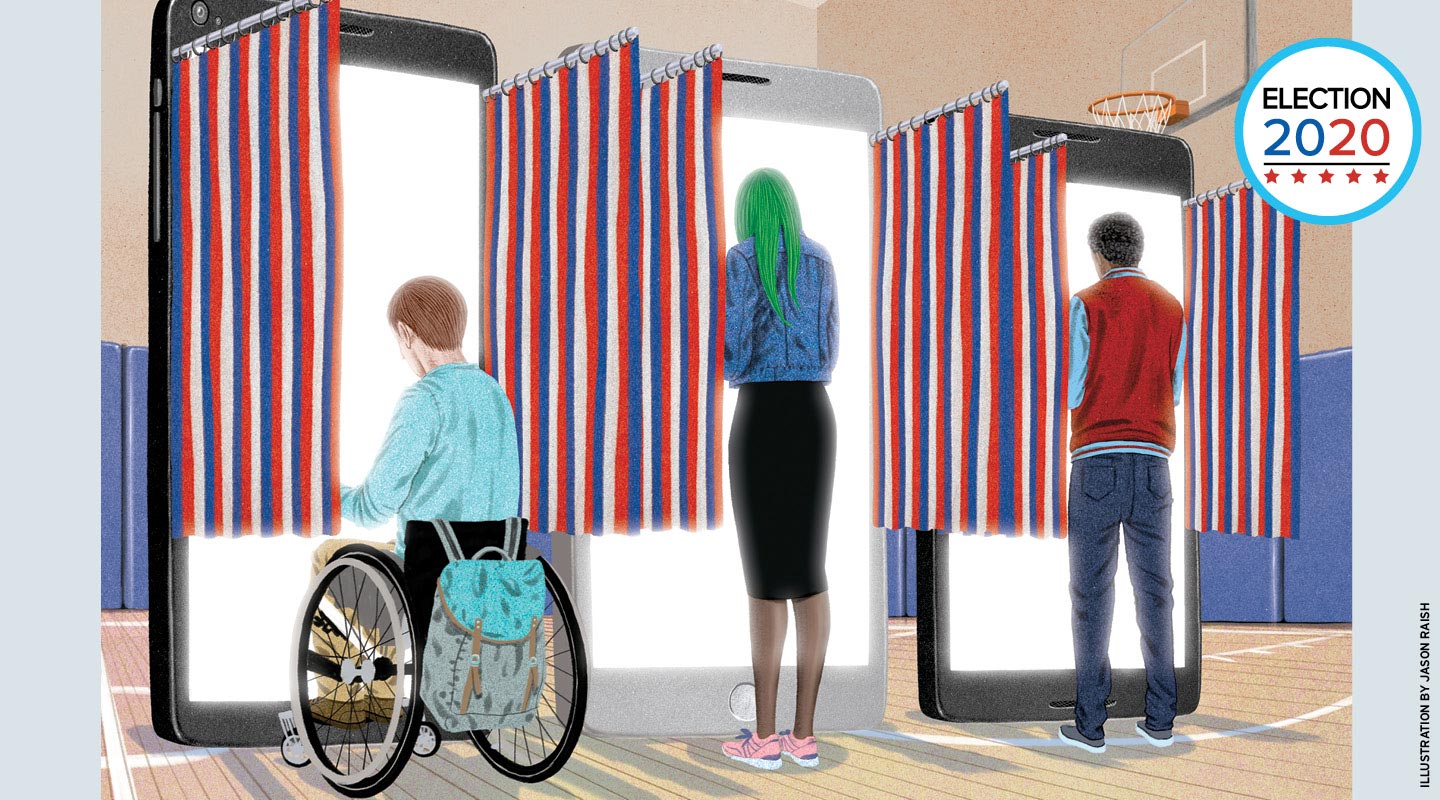We use our phones for everything: talking to friends, reading the news, doing our jobs, paying our bills, and so much more. So why not use them to vote too?
Voter turnout in the United States is incredibly low compared with other countries. In 2018, only 53 percent of those eligible voted—and that was a record high for a modern midterm election. For local elections and presidential primaries the turnout rate is substantially lower—closer to 20 percent. This is a huge problem, because when so many Americans don’t participate in elections, we don’t see the policy changes we want.
Turnout rates are low because there are too many obstacles to voting in the U.S. In March, about 1,000 people in Houston, Texas, waited in line for six hours to cast their votes in the presidential primary. Many simply gave up and went home. Voters with physical disabilities often have a hard time getting to the polls. And this spring, we saw with the coronavirus pandemic how the risk of spreading a virus can make it dangerous to vote in person.

